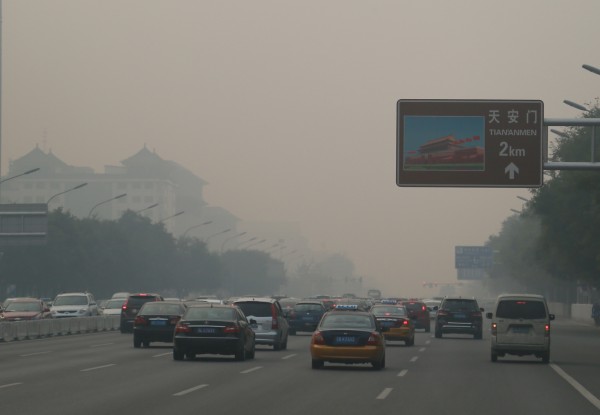

Follow us on:  
|


The city of Beijing has long been looking for ways to curb its vehicle-related smog [Xinhua}
According to the Chinese capital’s newly revised extreme weather emergency response mechanism, set to come into effect on December 15, these vehicles will be restricted from roads when the city issues red or orange smog alerts – the city’s two most serious weather and pollution alerts.
The city will also bar these high-emission vehicles completely on week days starting next year in a bid to bring down auto exhaust emissions which make up over 31 per cent of the city’s air pollution.
The ban starting next year will be applied to Euro 1 and Euro 2 standards for exhaust emissions. These are European Union emission standards that apply to passenger vehicles, light trucks and motorcycles.
There are an estimated 456,000 vehicles that meet Euro 1 and 2 standards in Beijing – making up only 8 per cent of the 5.7 million vehicles on the road that emit a staggering 500,000 tonnes of air pollutants a year.
China’s National Emission Standards comply with the European standards for emission limits. Standard I, which is equivalent to the Euro 1 standard, allows an average petrol sedan to emit a maximum of 2.7 grams of carbon monoxide a kilometer, Chinese news agency Xinhua says.
Last year, the Ministry of Environmental Protection removed nearly one million vehicles – registered before 2005 and which emitted excessive pollutants – from the roads in the first 10 months of 2015.
Beijing and broad swaths of its northern provinces are usually covered in dense smog just at the beginning of the winter season.
Beijing’s concentration of PM 2.5 particles – those small enough to penetrate deep into the lungs and enter the bloodstream – is alarming.
PM 2.5 are airborne particles measuring less than 2.5 microns in diameter which can pose health risks.
In recent years, PM 2.5 readings in the capital averaged nine times the safe level defined by the World Health Organisation (WHO).
According to the city’s emergency management officials, during a red alert, schools are advised to suspend classes, outdoor operations of construction sites are banned and some industrial plants are required to limit or stop production.
The BRICS Post with inputs from Agencies